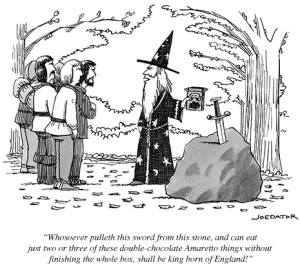Hippocrates recognized the power of lifestyle as medicine some 2500 years ago, testimony to his wisdom and prescience. As president-elect of the American College of Lifestyle Medicine, I celebrate the possibility of finding our way back to a future informed by such insight.
But for now, in the immediate aftermath of announcement, and on-going debate about just how many of us should take statins, let’s consider what Big Pharma would have to do to compete on an even playing field with the power of lifestyle.
Imagine, for instance, if the news were to break tomorrow – on the landing page of your favorite site, or front page above the paper crease for you traditionalists, in whatever news source you like best – that there is a new prescription drug. The drug is stunningly effective, and shockingly free of side effects. It is astoundingly safe – safe enough for newborns and octogenarians alike. It is available in bountiful supply, and remarkably inexpensive. In fact, you might be able to get it without spending any extra money at all – maybe even save money by taking it.
And, here’s the punch line. If you take this pill – which everyone else in your family can take along with you – once daily for the rest of your life, it would reduce your risk of EVER getting ANY major chronic disease – heart disease, cancer, stroke, diabetes, dementia, etc. – by 80%.
The only question here is which would be a better idea and the more immediate priority: calling your doctor to get a prescription for this wonder drug, or calling your broker to get some share of stock in the company holding the patent.
But, of course, there is no such drug. There never has been any such drug. And in my opinion, there never will be any such drug. But lifestyle is exactly that medicine, and we have known about it …well, since Hippocrates.
But we know about the power of lifestyle as medicine in the modern age in ways unavailable to Hippocrates. A seminal epidemiologic study published in 1993 in the Journal of the American Medical Association famously pointed out that the leading, actual causes of premature death in the United States are not heart disease, cancer, and so on – but the things that cause heart disease, cancer, and so on. Those factors sum up to a list of ten exposureswe each, overwhelmingly have the capacity to control in our daily lives. That list of ten is, in turn, overwhelmingly dominated by just the first three: tobacco use, dietary pattern, and physical activity pattern. Or, as I like to call them – how we use our feet, our forks, and our fingers.
That initial study spawned a whole branch of the epidemiologic literature, reaffirming over a span of decades now that lifestyle is by far the best medicine ever conceived – or, if neglected, a source of years lost from life, and life lost from years. Study, after study, afterstudy, after study, after study…has shown that feet, forks, and fingers are nothing less than the master levers of medical destiny. Add to these three the management of sleep, stress levels, and loving relationships in our lives, and the control over our medical destinies is astounding.
And, in tandem with the literature showing how these factors overmaster our fate with regard to chronic disease risk, there is a burgeoning literature showing that they have the capacity toalter gene expression, too. The Genomic Age has served up a powerful insight, albeit not the one we were expecting: DNA is not destiny. To a greater extent, dinner is destiny – because dinner, and lifestyle, can alter the behavior of our very genes. The nature/nurture debate is rather an unfortunate distraction, because we can, in fact, nurture nature.
Lifestyle is then, irrefutably, the greatest of all medicine. But as we learned from Mary Poppinsif not elsewhere, there is the separate challenge of getting the medicine to go down. Certainlythe last thing we need in this case is more spoons full of sugar!
Lifestyle is the greatest of all medicine, but it may feel in this morbidigenic, obesigenic world of ours that we can’t get it to go down, because we just don’t have the right spoon. It may feel that we can’t get there from here.
That is, in a word, wrong. We can get there from here.
Doing so begins by embracing the destination – by acknowledging that lifestyle is medicine we all want. Then, we have to acknowledge that we do indeed know just what destination we mean, that we know what healthy living looks like. We do – including diet – and if we could get past the distractions of competing dogma, we would have the destination clearly in our sights. I have written extensively about that destination before, in columns, peer-reviewed papers, and textbooks– so if you want more on the topic, just follow the links.
Finally, once the destination is clear – it’s a matter of following a route that leads there. And so we come to it: a fork in the road, where for far too long, a luminous opportunity for better health, and consequently better lives, has languished. A fork where health could remain alongthe road not taken, or find itself on a path of much lesser resistance. It’s time to choose.
Along one tine of our fork is perpetuation of the status quo, where we lose loved ones we don’t need to lose, long before their time. Or perhaps they lose us. It’s a road where we succumb to unnecessary miseries and lose both years from life, and life from years. And where we bequeath the same and even worse to our children – where they inherit along with our abdication an ever greater burden of chronic disease and premature death, at ever younger age. I think, and hope, this road is readily rejected.
Along another tine is a world that makes health more accessible, a better world. My career is devoted mostly to creating such a world. But it’s a long, slow, arduous process. This tine doesn’t lead to any immediate opportunity for each of us. Along this tine, some of us keep working, while the rest of us just keep on waiting on the world to change. It may happen, but I wouldn’t hold your breath.
And then there is the third tine, which leads promptly and without detour to the skill set we need to be the health we want to see for ourselves. It leads us to be the health we want to see for those we love. And of course, when enough of us have changed ourselves, it leads us tobe the changes we want to see in the world as well.
There is a place, an important place even, for lifestyle IN medicine – where health care professionals offer valuable guidance, and counseling that is both constructive and compassionate. But the power of this cannot compare to that of lifestyle AS medicine, where each of us pulls on the master levers of medical destiny every day. Think about the Blue Zones, those places around the world where people live the longest, healthiest, most vital lives. Those benefits are attributed to how they live and to their culture, not to the counseling they get from doctors. We are in control of how we live, if latently. We are in control of our culture-which begins at the level of household, where family values take hold. The cultivation of vitality could be a family value.
You can prescribe yourself lifestyle as medicine. You are the doctor in this case, for yourself and those you love. But as with all doctoring, it requires a skill set. If you don’t have it, you can get it. And frankly, there is no real alternative. No other medicine can do what lifestyle can do, and no one else can practice lifestyle for you. It’s your life, and only you can live it. If you empower yourself- if you acquire the requisite “skillpower” to take lifestyle as your medicine- it will almost certainly be a better life. Healthy people have more fun.
Lifestyle is the best medicine there is, ever was, and likely ever will be. At a fork in the road forhealth care, our economy, our culture, and what the future holds for our children and grandchildren- each of us holds the spoon that could get this medicine to go down.
 Daily text messaging may be a useful self-monitoring tool for weight control, particularly among racial/ethnic minority populations most in need of intervention, according to Duke University study results published in a Journal of Medical Internet Research article.
Daily text messaging may be a useful self-monitoring tool for weight control, particularly among racial/ethnic minority populations most in need of intervention, according to Duke University study results published in a Journal of Medical Internet Research article.


